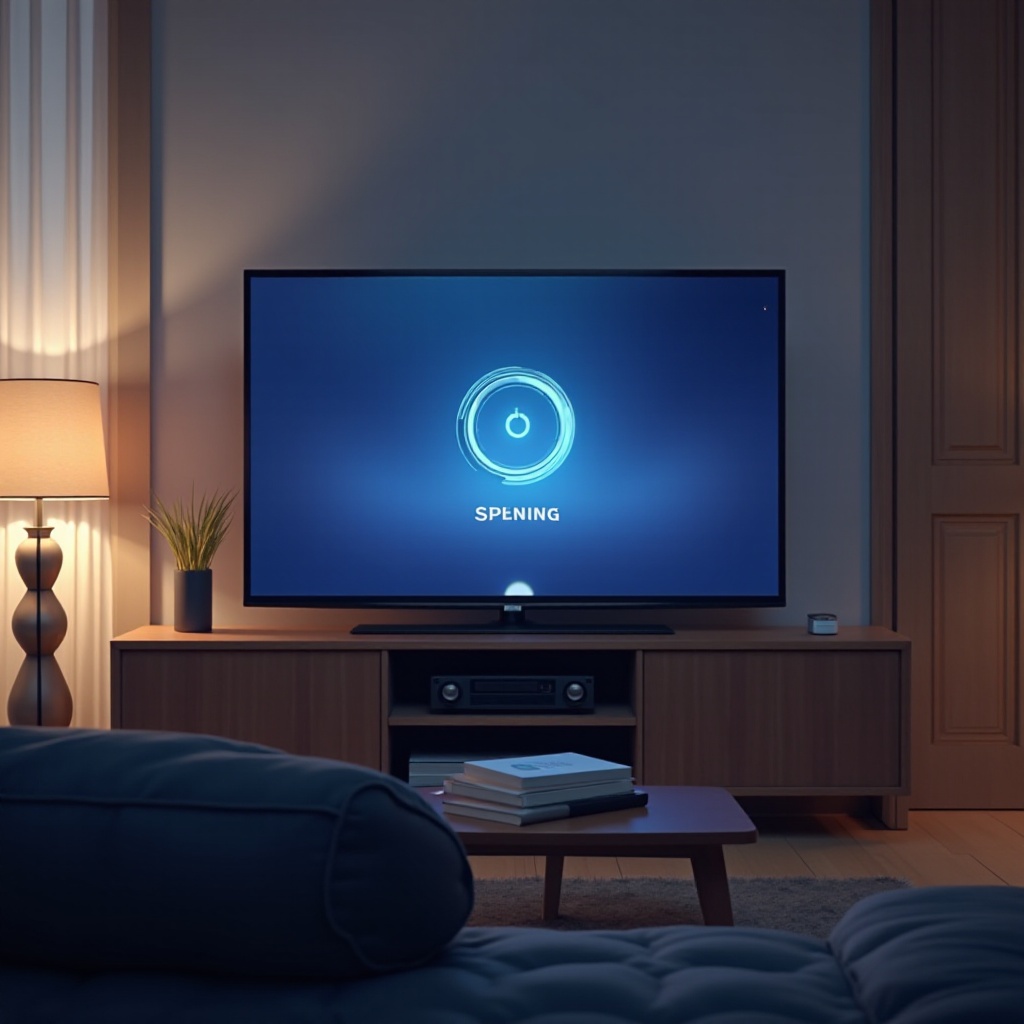Introduction
Hisense televisions are a popular choice due to their affordability and advanced features. However, users sometimes face the frustrating issue of slow responsiveness. Instead of a smooth viewing experience, you’re left dealing with delays and potential obstructions to your entertainment. Identifying the root causes of sluggish response times is essential to finding a solution and reclaiming the joy of your favorite shows and movies.

Common Symptoms of Slow Hisense TVs
If your Hisense TV is responding slowly, it won’t be subtle about it. Users typically notice a delay in reacting to remote control inputs, longer app loading times, or interruptions during streaming. Switching between input sources could also become a tedious affair, and boot-up times may increase noticeably. Recognizing these symptoms early is critical as they indicate an issue that requires troubleshooting. Understanding these signs sets the groundwork for tackling the underlying causes effectively.
Potential Causes of Slow Response
Software and Firmware Issues
One prominent cause of sluggish response times in Hisense TVs is outdated software or firmware. Without regular updates, your television might wrestle with processing new data or executing applications smoothly. Bugs present in older firmware can also lead to performance dips that adversely impact viewing pleasure.
Network Connectivity Problems
Hisense Smart TVs depend significantly on robust network connections. A weak Wi-Fi signal can result in buffering and slow app responses. Interference from other devices or network congestion may further exacerbate these connectivity issues, culminating in perceivable slowdowns in television performance.
Hardware Limitations
In rare cases, hardware limitations might be the reason behind the slow response. Older models may lack the processing power to cope with the requirements of modern apps and media. Constraints in RAM or a dated processor could lead to frequent lags and delays.
Recognizing these potential causes allows for a structured approach to troubleshooting, leading you closer to the solution with each step.

Troubleshooting Steps to Improve TV Speed
Restart and Simple Clearing Techniques
- Restart Your TV: Often, a simple restart eliminates minor glitches and refreshes system memory, leading to improved speed.
- Clear Cache: Access settings to erase the cache of apps and the system, which reallocates space and enhances resource availability.
- Unplug Devices: Disconnect unnecessary devices such as USBs or HDMI inputs that might overload the TV’s system.
Update and Optimize Software
- Check for Updates: Use the settings menu to search for any available software or firmware updates and install them promptly.
- Delete Unused Apps: Boost your TV’s operating performance by removing apps you no longer use.
Enhance Network Connections
- Switch to Wired Connection: Use an Ethernet cable for a more stable and efficient connection than Wi-Fi typically offers.
- Optimize Router Placement: Improve signal strength by positioning the router closer to the TV or employing a Wi-Fi range extender.
- Reduce Network Load: Lower the number of devices using your home network when the TV is in use to maximize speed.
Employing these troubleshooting measures should resolve most slow response issues. If not, further investigation might be necessary.
Advanced Solutions for Persistent Issues
Factory Reset Considerations
Executing a factory reset can restore original settings and remove any corrupted data. Note, this process deletes personalized settings and apps, so reserve it as a last resort option.
Managing External Devices
Verify that all external devices and connecting cables are up-to-date and compatible with your TV. Outdated hardware can significantly impair television performance.
When to Consult a Technician
If issues persist beyond home troubleshooting efforts, seeking professional help may be the best course of action. Technicians can delve into hardware problems and provide deeper system analysis where required.
These advanced solutions form a comprehensive strategy to ensure optimal TV performance. Upon resolution, focus on measures that sustain effective operation.

Preventive Measures for Better Performance
Regular Maintenance Practices
Regularly updating software, conducting system checks, and clearing caches can prevent issues from escalating. Keeping the TV area clean and properly ventilated also contributes to improved performance.
Keep Your Home Network Optimized
Assure your network’s optimized operation by updating router firmware and implementing security measures, like WPA3 encryption, to protect bandwidth.
Adopting these preventive strategies fosters a stable entertainment environment, reducing the likelihood of future disruptions and ensuring seamless TV operation.
Conclusion
Understanding the reasons behind a slow Hisense TV involves uncovering common problems, identifying potential causes, and applying effective repair strategies. Equipped with this knowledge, you can enhance your TV’s performance and amplify your home entertainment experience. Consistent maintenance and network optimization remain critical allies in sustaining reliable, enjoyable television use.
Frequently Asked Questions
How do I update my Hisense TV firmware?
To update firmware, access your TV’s settings menu, select ‘Support,’ then choose ‘System Update.’ Follow on-screen instructions for updates.
What internet speed is optimal for Hisense Smart TVs?
An internet speed of at least 15 Mbps is recommended for smooth streaming on Hisense Smart TVs, ensuring optimal viewing for HD and 4K content.
Can external devices cause my TV to lag?
Yes, outdated or incompatible external devices can cause lag. Always use updated hardware to prevent it from hindering TV performance.
